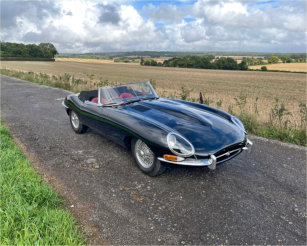
I am often asked about classic cars as a financial investment. Generally, my answer is something along the lines of: “I wouldn’t recommend a classic car as an investment if that is all you are interested in. However, if you want somewhere to put your money to generate a modest long-term return while having something immensely enjoyable to drive, then go for it.”
I should clarify at this point that I am not a financial advisor, and nothing I say here should be interpreted as financial advice. I am a classic car restorer and enthusiast, and this is the lens through which I view this subject. As such, I am conscious of the risk that when a person comes to sell a car, the market may not be favourable. Therefore, it is best to buy a car you are happy owning, in case you need to keep it longer than expected.
 The flip side of this is that, unlike traditional assets, classic cars offer the opportunity to have an investment that you can use and enjoy. This, in my opinion, is their true selling point. So, if you are thinking of investing in a classic car - which, as I say, wouldn’t be my primary reason to buy one - what do you need to consider?
The flip side of this is that, unlike traditional assets, classic cars offer the opportunity to have an investment that you can use and enjoy. This, in my opinion, is their true selling point. So, if you are thinking of investing in a classic car - which, as I say, wouldn’t be my primary reason to buy one - what do you need to consider?
A key factor driving classic car values is rarity. Limited-production models, particularly those from renowned manufacturers like Jaguar, Ferrari, and Porsche, often command high prices. Iconic cars with historical significance or links to pop culture - such as Minis or Jaguar E-Types - also tend to appreciate over time.
Condition and provenance are critical in determining a classic car’s worth. Vehicles that remain in pristine or original condition, with documented history and matching numbers, typically fetch higher prices. Restoration quality also impacts value, as poorly executed repairs can diminish a car’s appeal.
Historically, the classic car market has shown resilience during economic downturns, with some models appreciating even when other assets falter. However, like any investment, this market has risks. Prices can vary, influenced by trends, tastes, economic factors, and demographic shifts. For example, the significant drop in values of pre-war cars and the rising prices for 1980s and 1990s models demonstrate how demographics have shaped the market.
Would-be investors should research thoroughly and seek advice from experts to identify promising opportunities. Due diligence is essential to avoid overpaying or purchasing a vehicle with hidden issues.
Ultimately, my advice would be not to view classic cars solely as an investment. Although in some cases they can provide significant returns, I feel it is better to focus on the intangible benefits of classic car ownership. You cannot drive and enjoy a share portfolio. An ISA doesn’t provide a tangible connection to the past and the joy of ownership. These cars are living pieces of our cultural and engineering heritage and should be cherished in their own right.
Over future editions I will share further articles on the world of classic cars. I hope to give a broad and varied view of the classic car scene. If you would like to read about anything in particular, please email me at harry@jagxk.com